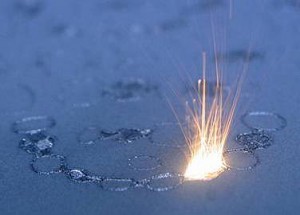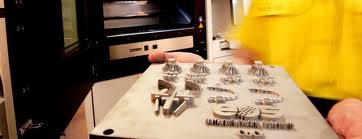Dr. Hans J. Langer founded EOS GmbH Electro Optical Systems in 1989 and serves the as its Chief Executive Officer. As one of the longest standing Executives in the 3D Printing and Additive Manufacturing sector his perspective and understanding of it is unrivalled. A gentleman through and through, Dr Langer has unsurpassed experience and knowledge when it comes to leading the company that offers one of the most understated but widely used additive processes in the world.
3D Printing Industry: Can you give us some insight in to your 3D printing story and the history behind EOS?

EOS developed a customer-specific system for them, which later turned into a standard system for the market. Over the years, the BMW requirements developed towards a plastic laser-sintering system. Plastic laser sintering (although today, laser melting is more accurate) was a second AM process we developed the same way (together with the customer) in parallel but finally decided to exclusively focus on the latter. After the plastic system, EOS also developed the DMLS metal process — based on a project for Scandinavian customer Electrolux and again mirroring their particular customer requirements.
3D Printing Industry: When did you first understand the huge potential of Laser Sintering / Laser Melting as a method of manufacture, above and beyond the great prototyping capabilities?
Hans Langer : The first years were devoted to materials development. In 2007 we began to understand and see that with DMLS we could achieve completely new material properties. Based on powder-based metal materials, parts could be created using our manufacturing process that showed material properties much better than those which normally can be achieved with conventional manufacturing processes.
3D Printing Industry: Can you tell us a little about the journey from laser melting plastics to laser melting metal?
Hans Langer : This was not a journey where in chronological order we first developed the plastic and subsequently the metal process. This rather happened in parallel, predominantly pushed by those customers we have already been talking about. At that time, we saw the limits of the then available laser technology. With the lasers available at that time, it was not possible to realize a laser melting process to meet the high requirements of our e-manufacturing customers. Materials development was our essential focus then. And we finally came to the conclusion that only the perfect match of the laser, materials and the technology to process the later will lead to good results for the end product.
3D Printing Industry: In terms of R&D at EOS where is the primary focus — process development or materials development, or indeed, both?

3D Printing Industry: The Laser Melting process is very much focused on industry, with EOS operating a B2B business model. How far do you think you have penetrated the industrial markets, and how much further do you think it can go?
Hans Langer : We have only just touched the surface.
3D Printing Industry: Despite the industrial focus of the Laser Melting process, it is evident that EOS is collaborating with a number of high profile companies working on consumer applications of 3D printing. Do you see this as a strong growth area?
Hans Langer : Consumer applications are definitely a strong growth area for us and for our B2B customers as well who are starting to use our technology. Historically, we have been working with manufacturers of lamps and fashion products. Jewellery is just the start of a further exciting journey into consumer products made via laser melting.

Hans Langer : We developed a solution with a big player in the industry – UK-based Cookson Precious Metals (CPM). Before they were partnering with EOS, they were selling just gold. With the start of our partnership, CPM will be selling AM solutions with gold.
3D Printing Industry: Where do you stand on 3D printing in full colour? Is this something that we will see from EOS in the future?
Hans Langer : We are working with coloured materials. But this is not our focus at the moment.
3D Printing Industry: What is your take on the recent “3D print a gun” stories?
Hans Langer : Customers use our technology for a wide variety of applications. We focus on the development of sustainable solutions.
3D Printing Industry: In terms of 3D printing applications, do you have a favourite and will you share it with us?
Hans Langer : I have a favourite. It is a consumer product. But I am afraid I cannot share it with you due to confidentiality agreements.
3D Printing Industry: What is your vision, including personal predictions, for the next five years for 3D printing in general; and for EOS in particular?
Hans Langer : EOS is focusing its resources on sustainable solutions. This means that we are developing solutions for and together with our customers which create high sustainability effects for their customers during the use of the product. I think a lot of Fortune 500 companies will pick up the technology – or already do so now – to develop solutions that might have a major impact on sustainability results of their customers.



